

Emerging From the Gloom
This image series shows an approaching male orca or killer whale emerging from the gloom as he surfaces for a breath. Orcas are found in all oceans and seas from polar to equatorial regions making them amongst the most diversely distributed animal species on the planet. The name killer whale comes from some orcas specialising in killing whales. They are in fact the largest of the dolphins.
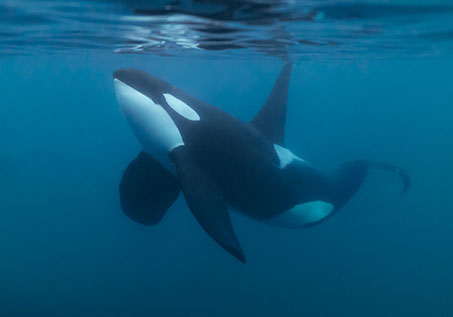

Underwater Shooting in the Polar Night
In the polar night when the sun does not breach the horizon, the surface light is dull but brightest from 10:00 am to noon. Underwater photography requires fast lenses and camera sensors tolerant of low light levels (high ISO shooting). I used a Canon 5D4 with a 35mm f1.4 lens and a Zen 230 Superdome with a Nauticam housing.

Orca Ecotypes
A Orcas are classified by ‘ecotypes’ based on food specialisation, geography, body shape and colouration. The orcas in the northern Norwegian fjords are type 1 resident orcas and specialise in fish and sometimes seals. The white eye patch is parallel to the body. They move from offshore to coastal waters following the seasonal migration of the Norwegian spring-spawn herring (Culpea harengus).
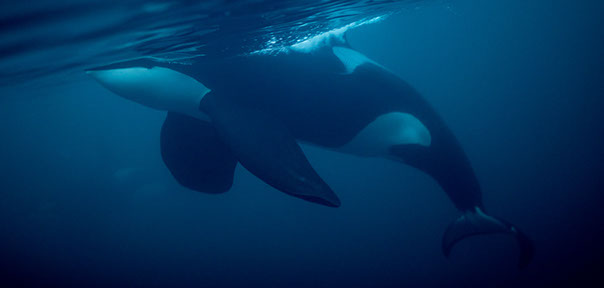
Follow the Herring
The Norwegian herring numbers plumeted at the end of the 1960‘s due to overfishing. As stocks recovered, the herring began to overwinter in the fjords rather than offshore waters. For the past six or seven years, schools of migrating herring have invaded the fjords of Tromsø during November. The orcas and humpbacks followed their favoured food. In late 2017 the herring did not migrate to the Tromsø fjords but were found further to the northeast in the fjords around Skjervøy. These images were all taken in the waters around Skjervøy.
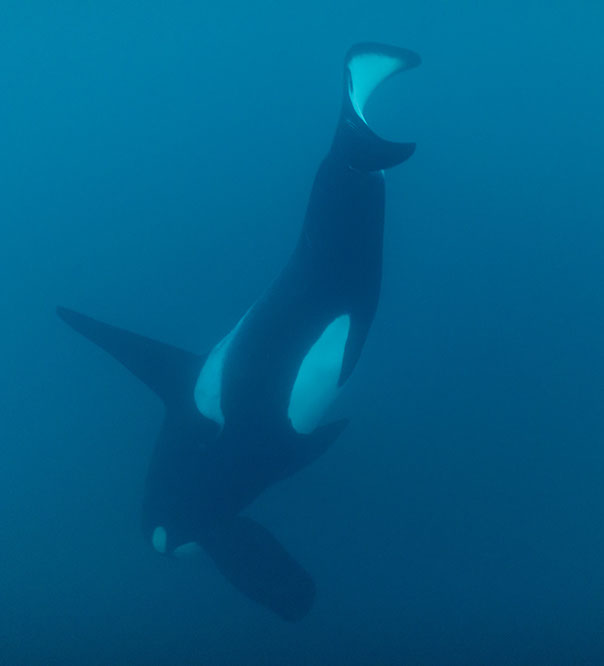
Carousel Feeding
This orca ecotype has evolved a sophisticated cooperative hunting method called ‘carousel’ feeding. They work together to herd the herring into a tight ball, circling it and forcing the herring to the surface. They then stun the fish by slapping the school with their flukes. The next step is a leisurely mopping up operation to scoop up the motionless fish.
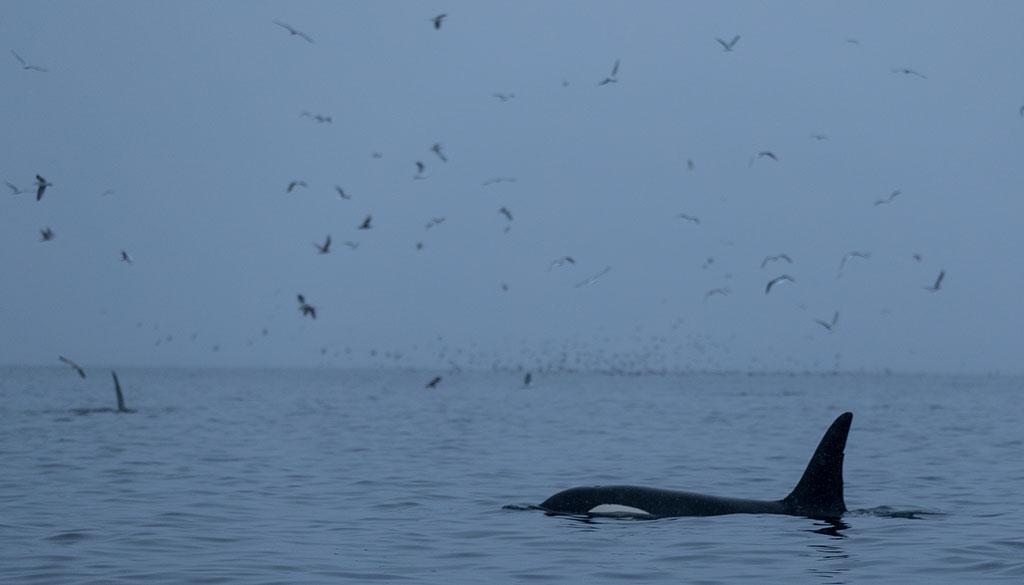
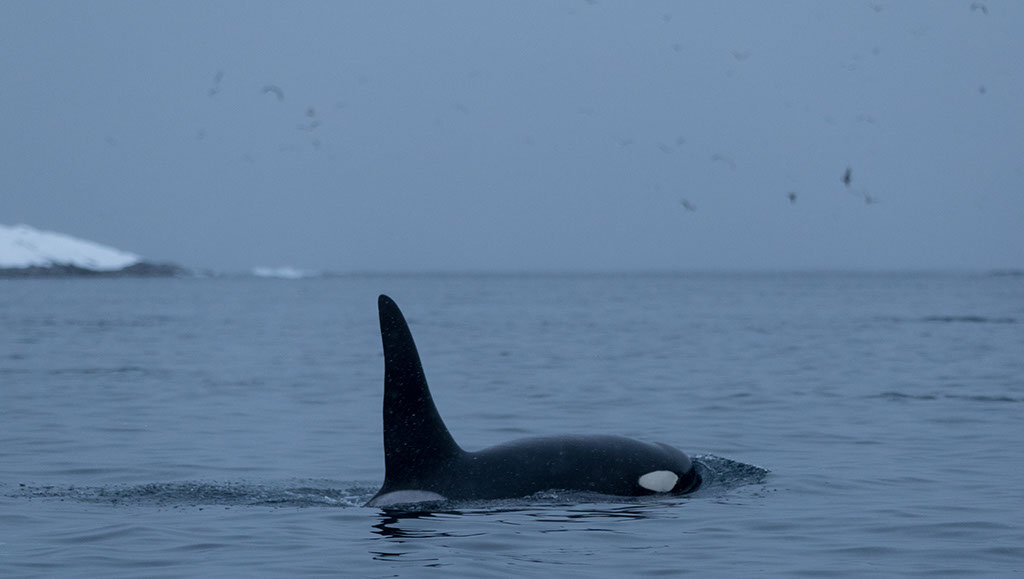
Males - A distinctive Perpendicular Dorsal
Males are sexually mature at 15 when the distinctive dorsal fin lengthens substantially. They are fully grown at 20 years of age

Females - Curved or Hooked Dorsals
Females and immature males have falcate (hooked) dorsal fins
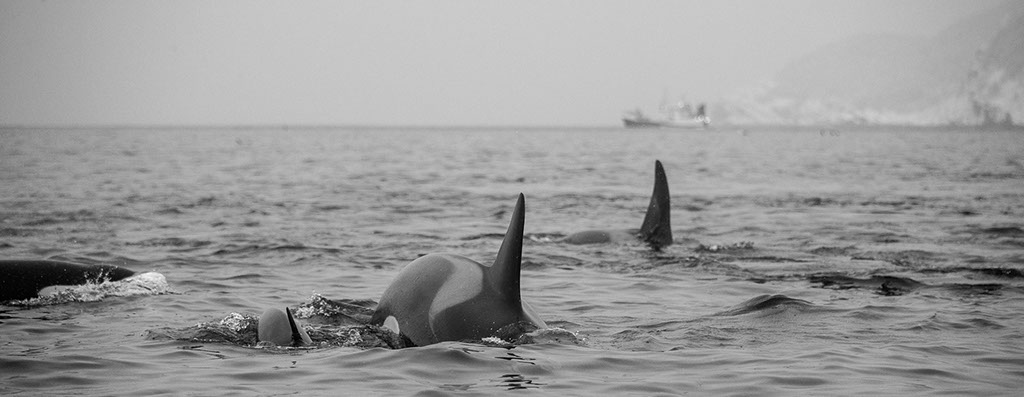
The Calves - Under Threat From Toxins
A young calf stays tight with mum. It will suckle her fat rich milk for up to year. Sadly mortality rates for orca calves can be up to 50%. This is thought to be due to the mothers releasing a build up of toxins through their milk. The first born calves are most at risk, receiving a high toxin dose relative to their body size. Orcas are apex predators at the top of the food chain and at risk from an accumulation of environmental pollutants through that food chain. Females can breed at 12-14 years through to age 40, but typically will only give birth to 4 or 5 calves.
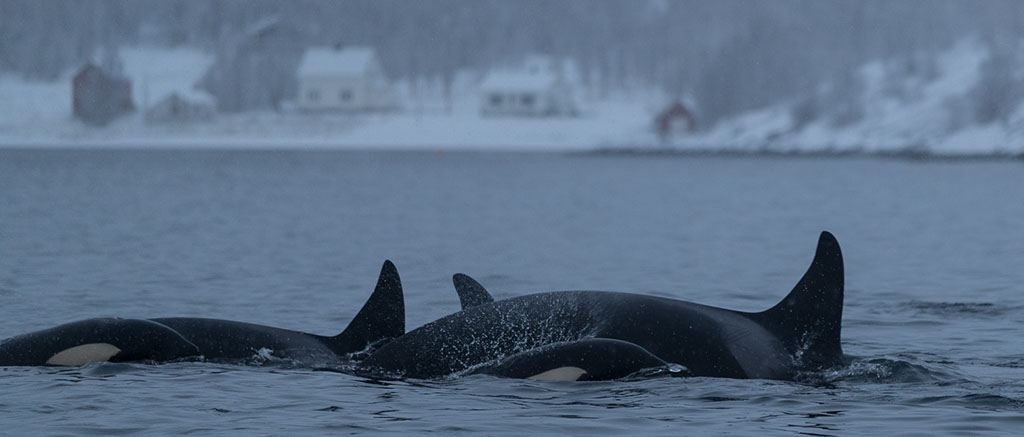
Females Run The Show
Like elephants and sperm whales, the highly social orcas live in matrilineal groups. The eldest female is the leader and passes on cultural knowledge such as hunting techniques and migration patterns. Orcas have three types of vocalisations: ecolocation clicks for detecting prey, pure tone signals for short distance social communication and pulsed calls for long distance communication.
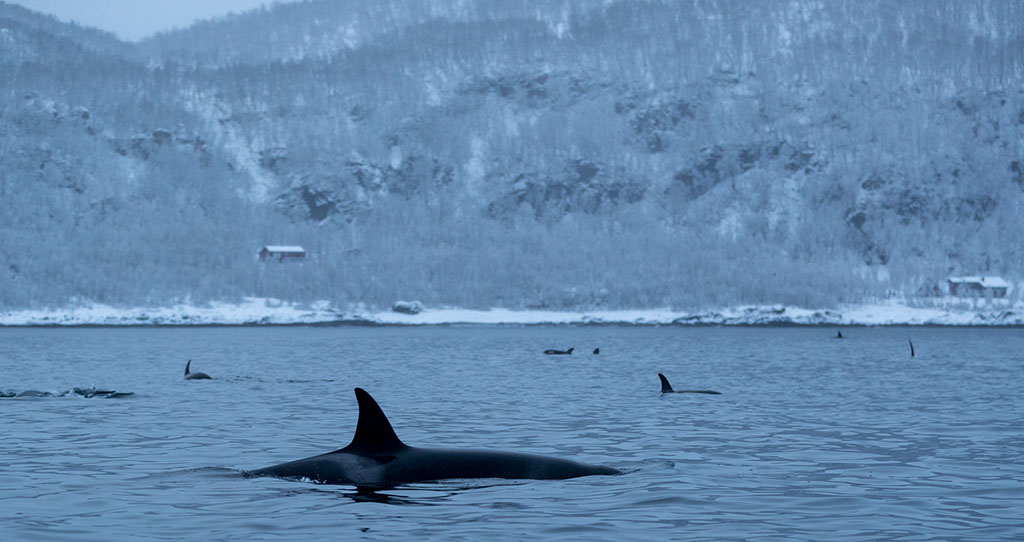


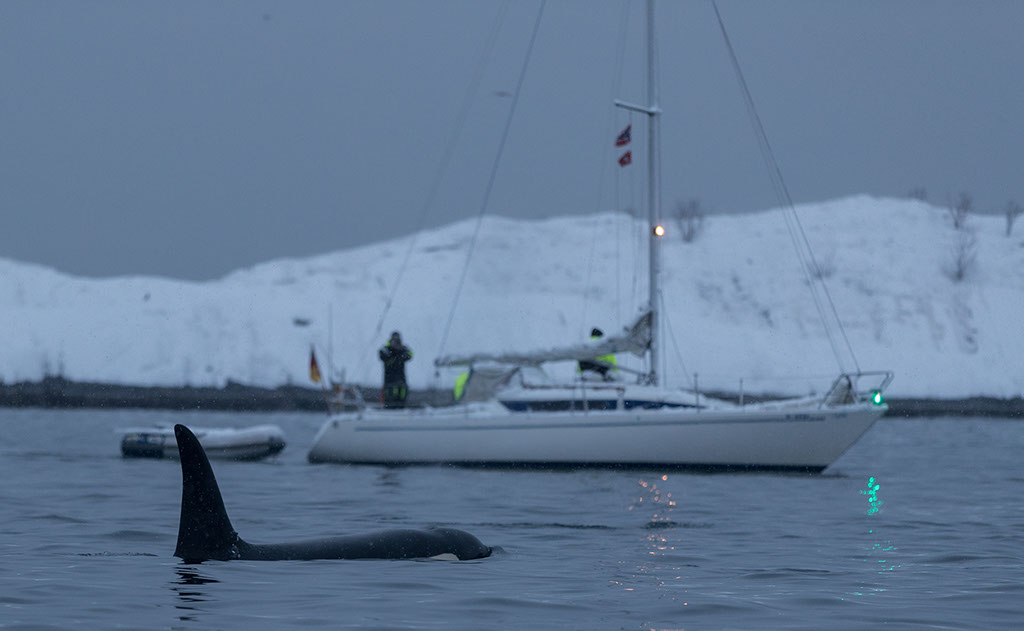

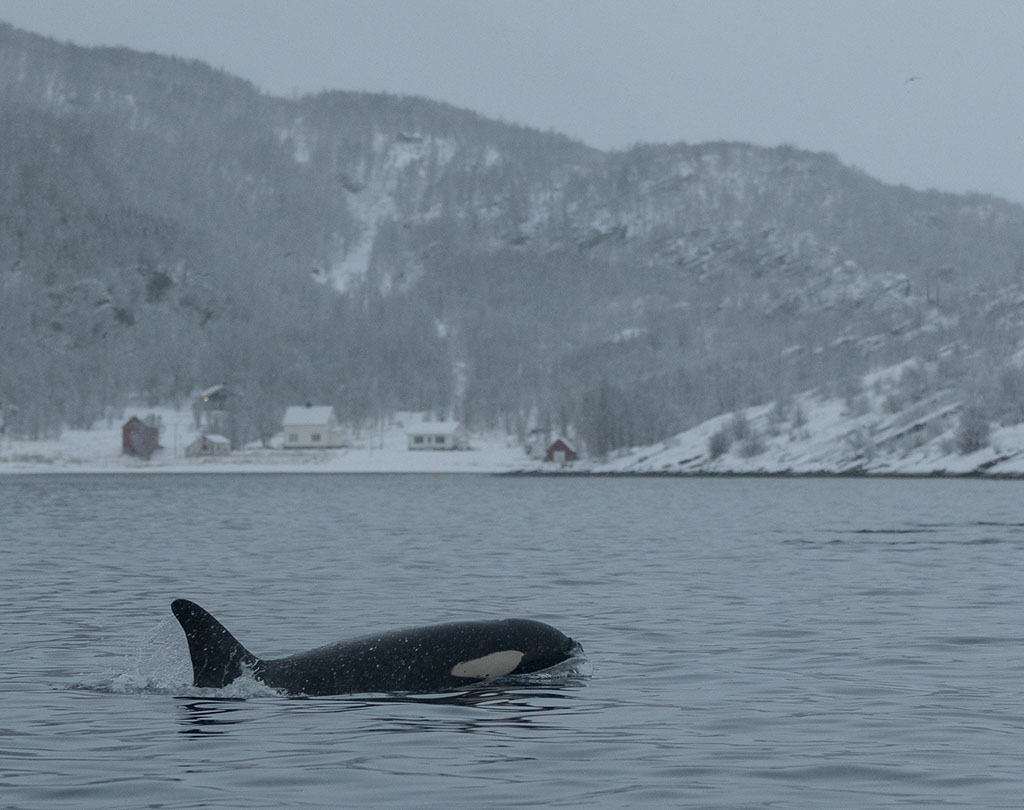


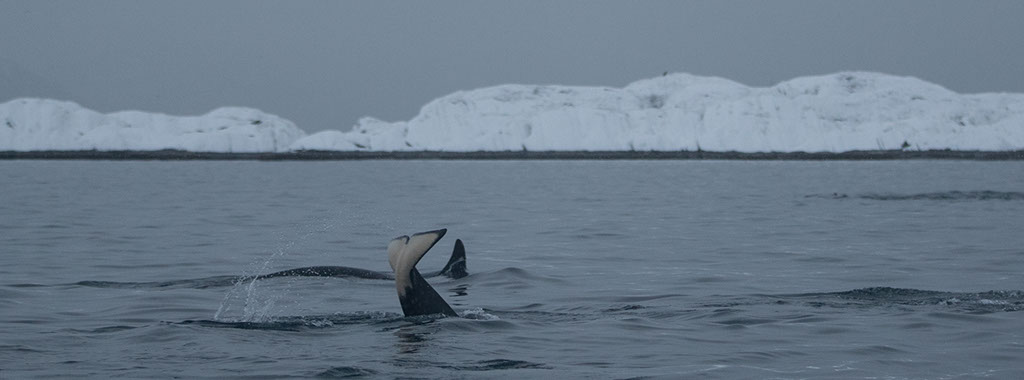

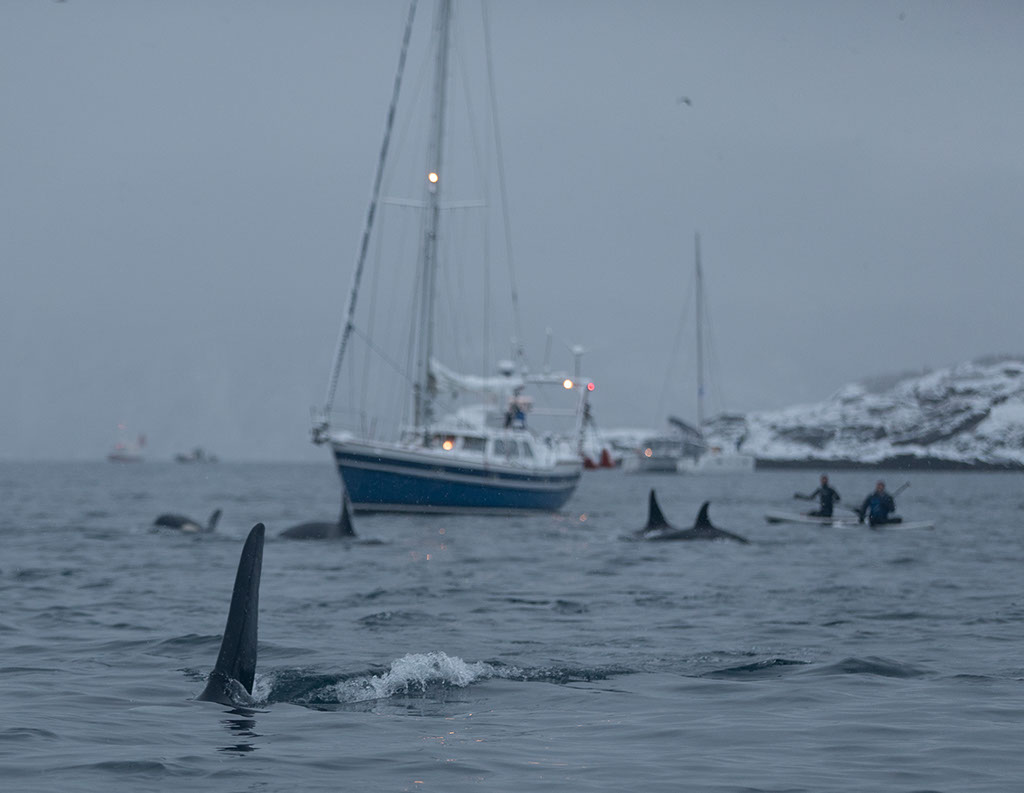


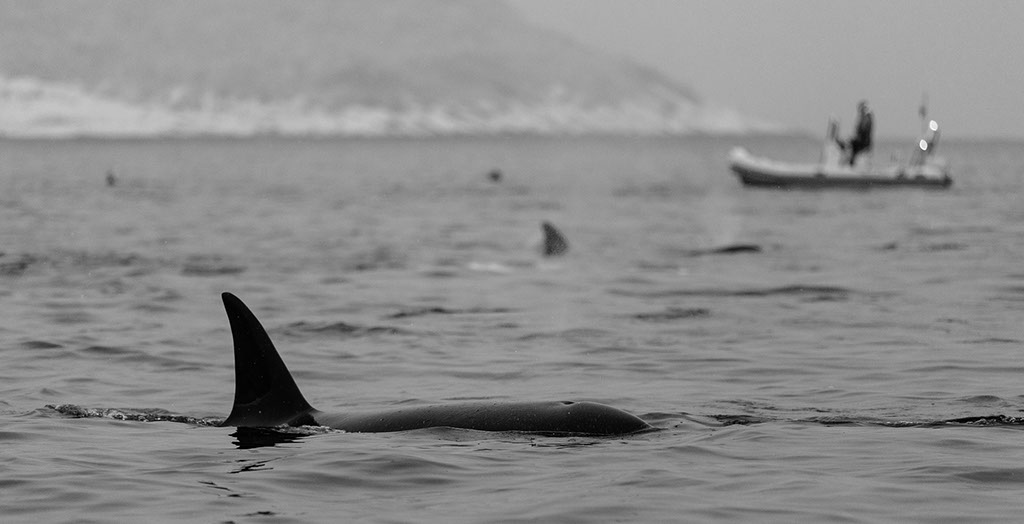
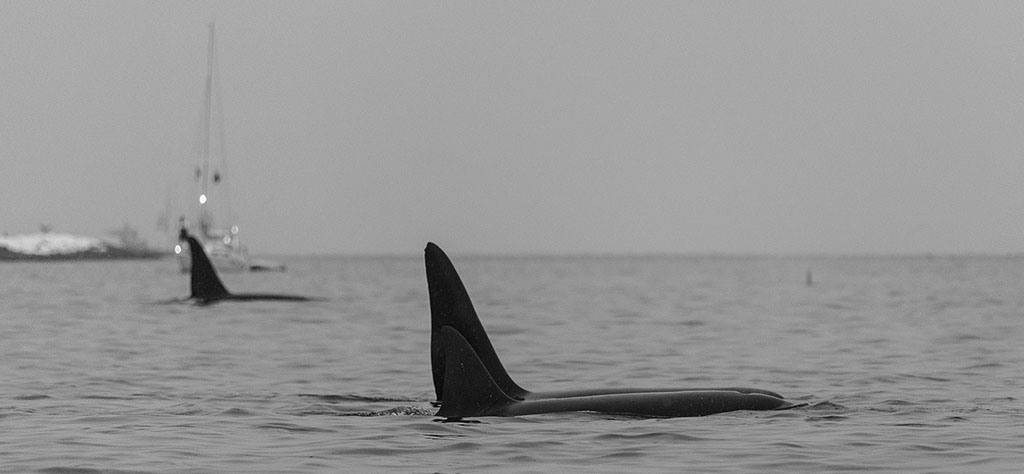
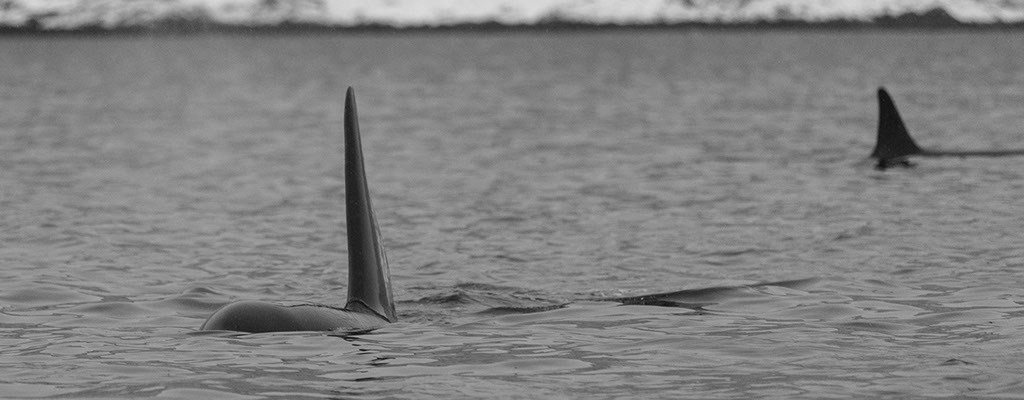
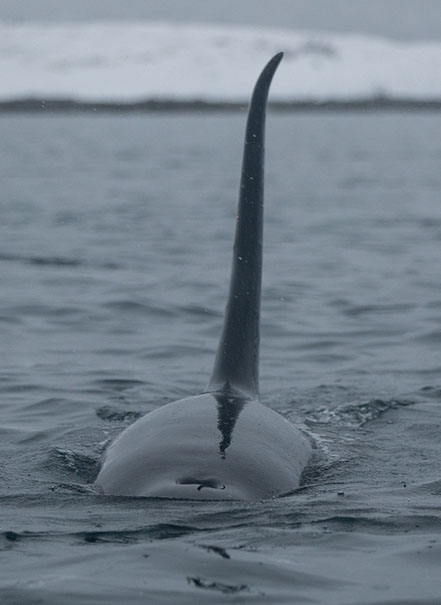

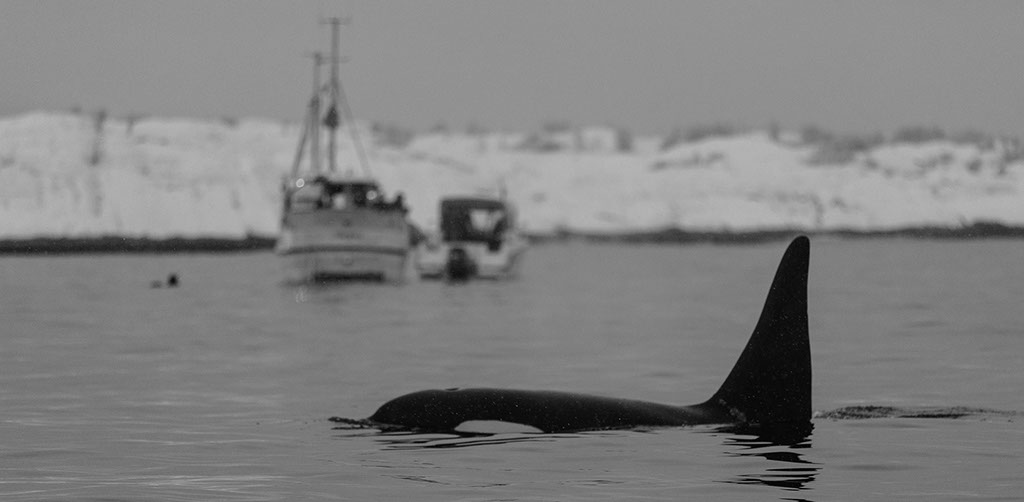
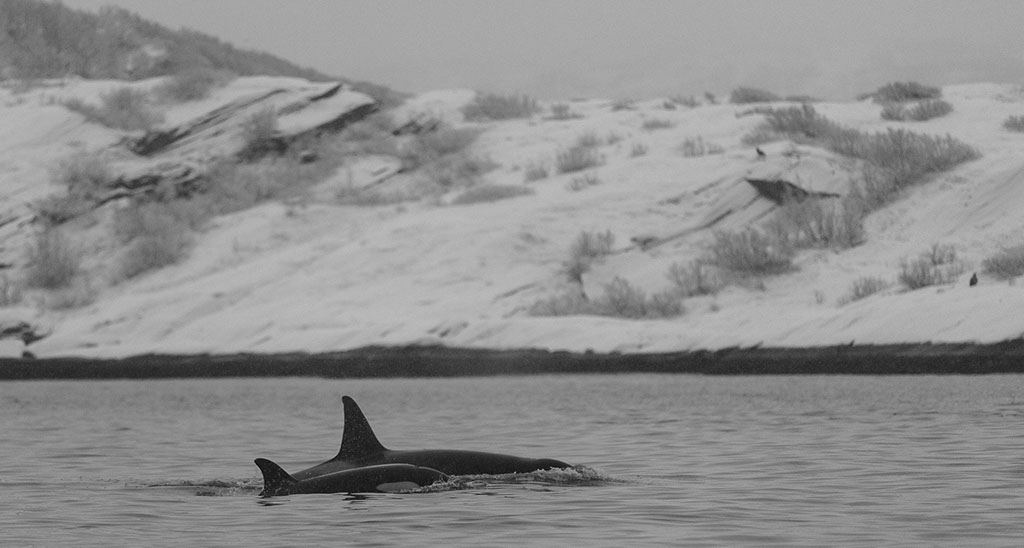
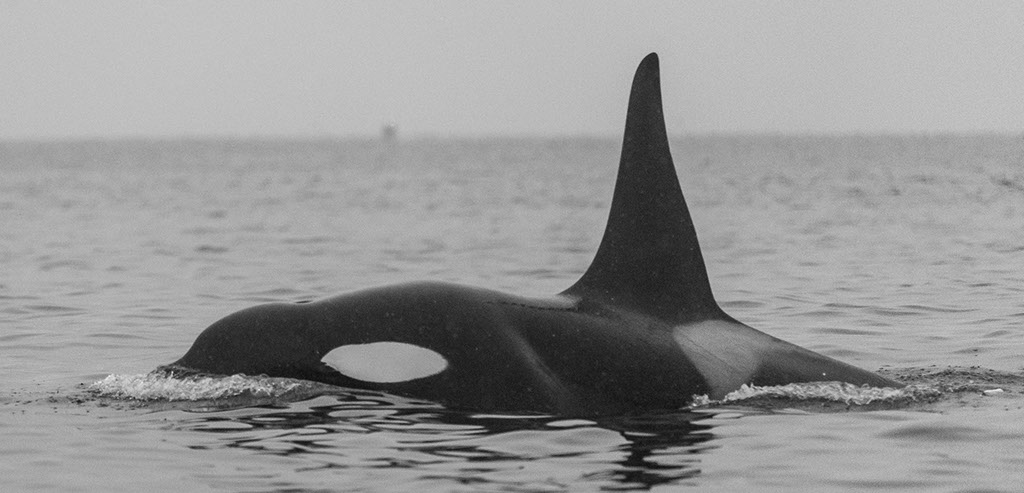
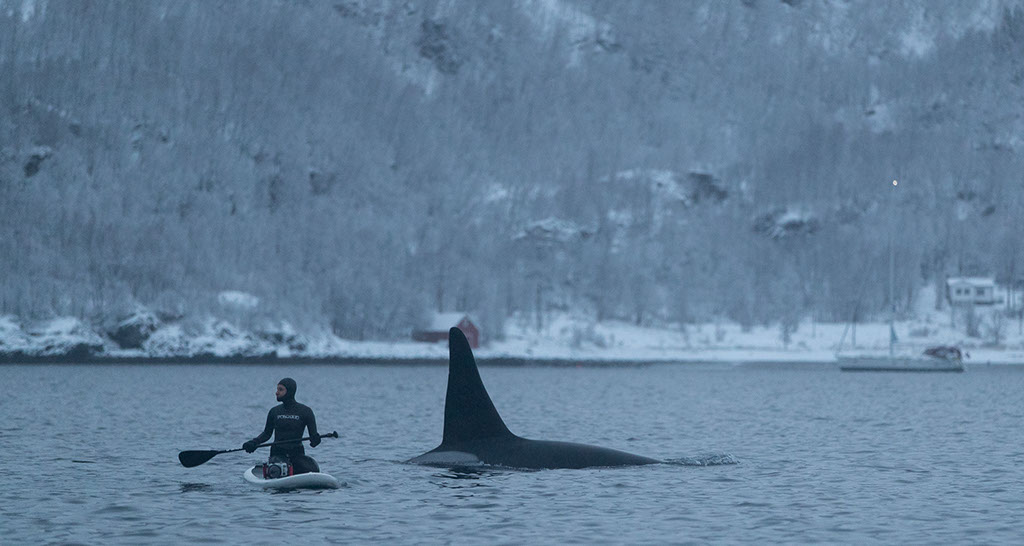
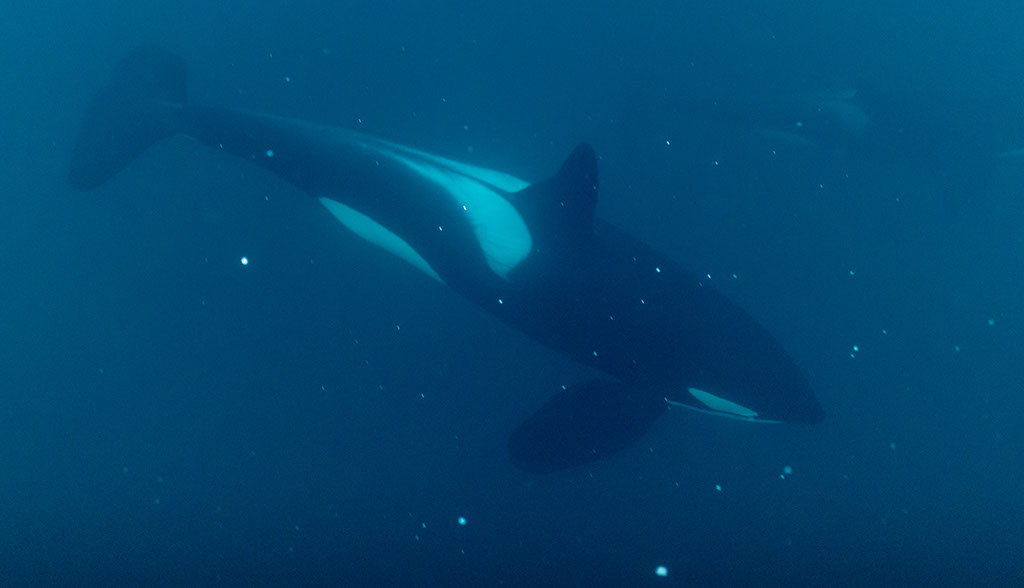
Orcas in the Snow
We had frequent snowfalls. Here snowflakes diffuse through the water around the orcas.
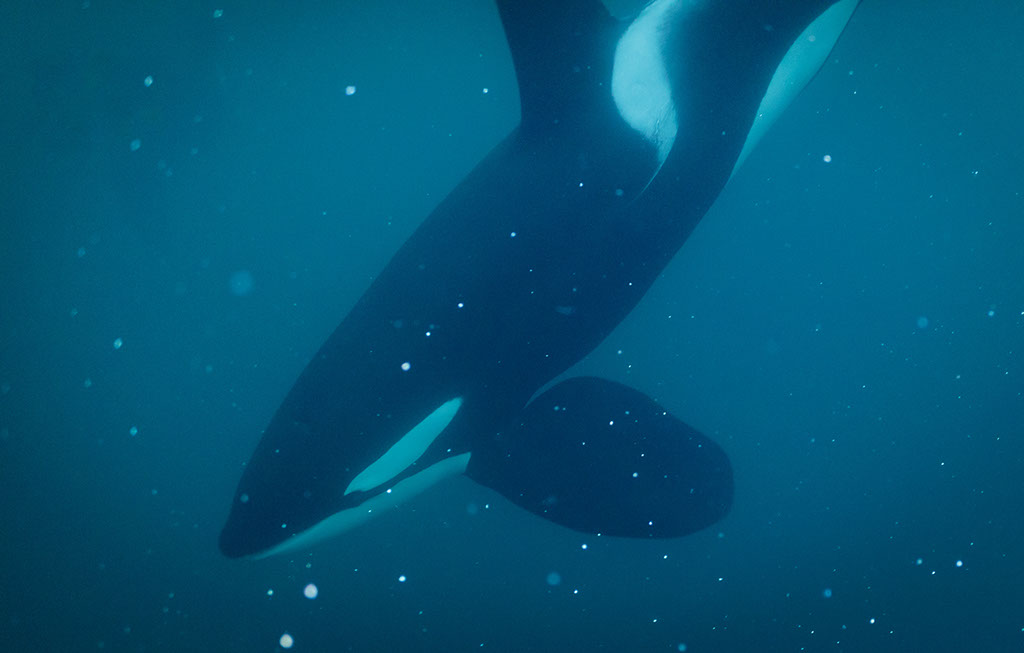
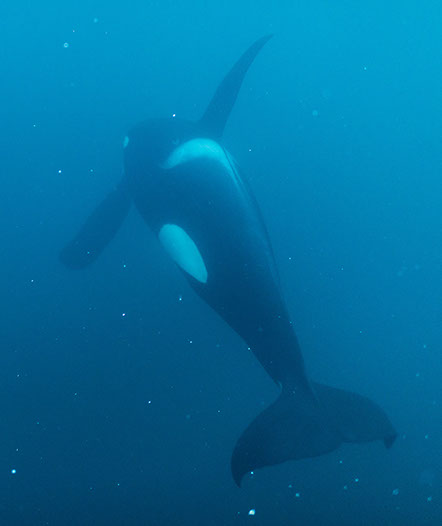

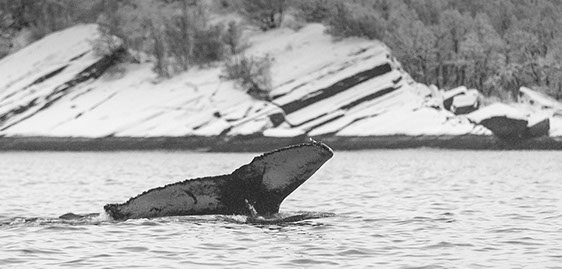
Humpbacks & Orcas
Humpbacks mixed in with the orca to feed. These were small whales, maybe sub-adults too young to breed that had declined to migrate south for winter and stayed with the food. This is safe territory for the humpbacks as these resident type 1 orcas specialise only in fish and seals. In other seas, humpbacks are prey.